THE SINGAPORE SERIES – CHAPTER 6
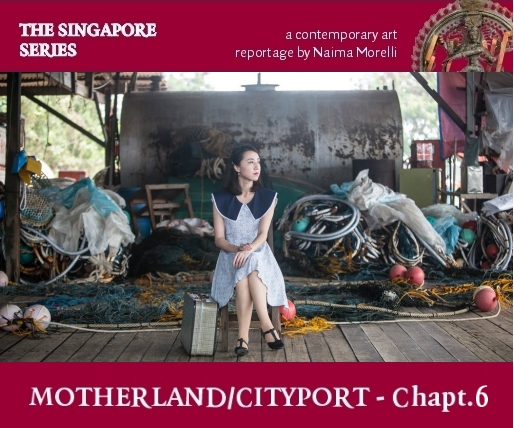
Sherman Ong: Motherland
In 2013 the now defunct gallery Chan Hampe hosted an important collective show analysing the effect of segregation in the Lion City. This was called ‘Motherland’ and was curated by Christina Arum Sok. The show examined Singapore as the home to people as different as the first generation of coolies arriving to find work, all the way to today’s foreign executives and migrant workers. In the press release, the curator mentioned how Singapore has become home to a wide array of people looking for opportunities and how they tend to not blend as naturally as the state propaganda would led to believe:
“ […] foreigners have largely embraced elements of ‘Singaporeaness,’ adapting or re-inventing themselves like chameleons to wear different hats that embody both their native culture and that of their adopted home. It is not so much assimilating or integrating into a ‘Singaporeaness’, but rather a celebration of multiplicity and a fusion of differences that should be emphasised. Instead of the xenophobic attitudes that shun the ‘infiltration’ of foreigners as well as the preoccupation with a sterilized racial harmony that only gives room for Chinese, Malay, Indian and the ambiguous or all-encompassing ‘Other,’ perhaps it is now the time to unlock the door for the ‘Others’ and adopt a broader, more accepting approach to differences. It is this element of ultra-diversity that gives Singapore the edge, making it a competitive city-state that attracts people from all walks of life.”
The curatorial concept behind the show ‘Motherland’ revolved around the meaning and evolving perception of motherland, and home in a global scenario and in a globalised, ever changing city. In this new light, we must reconsider the idea of homeland introduced earlier with Boedi Widjaja’s work, giving it a different shade. What is the meaning of concepts like homeland or motherland in a city port built on layers of migration around the region? A nation-state made to be a place of passage, relocation, hosting a flux of different people? In a fast, fluid city, the notion of “home”, tied to a static, categorical idea, might even look obsolete. At the same time the notion of the ‘original people’ of the land is much more opaque that it is in places like, say, Australia or New Zealand, where there is a sharper divide between the descendants of the traditional people and the descendants of the colonisers.
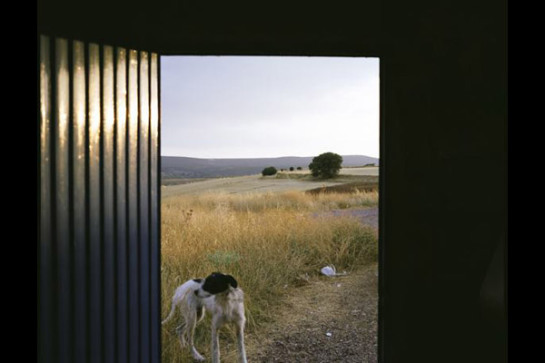
The three artists exhibiting in the ‘Motherland’ show looked at the issue from very different perspectives. Mike HJ Chang, investigates familiar objects found in every home and showed its absurdness. Robert Zhao Renhui photographed “what-if” landscapes on an imaginary Singapore, and Sherman Ong highlighted stories of immigrants who struggle to belong in the work which gave the title to the show. Walking in the pristine space of the Chan Hampe gallery in the Raffles’ Hotel, I stopped intrigued in front of his video work.
A young lady was tidying up a desk. Then she became washing the dishes. She kept on tiding up around the house, and then suddenly she turned towards the camera and said in her mother tongue: “There is not much to talk about.” She paused and then continued, “It’s just like this for me every day.” She rolled up some papers and then she sighed, resigned. Then slowly she started telling her story: “I came here in 1997. Back then, everyone wanted to go overseas. Later on, I also wanted to go out and take a look. So I saved a sum of money and came here with a group of friends. The fact is that after I came to Singapore, suddenly I felt like the world outside is really exciting.”
She went on telling of the jobs she did when she first decided to move to Singapore and the older man she felt in love with and ended up marrying. Then, with the same neutral tone, she let us know that the man recently died and that she decided not to fight with the sons of the man for the house, but rather stayed in Singapore and work. She says it was impossible for her to go back to China.
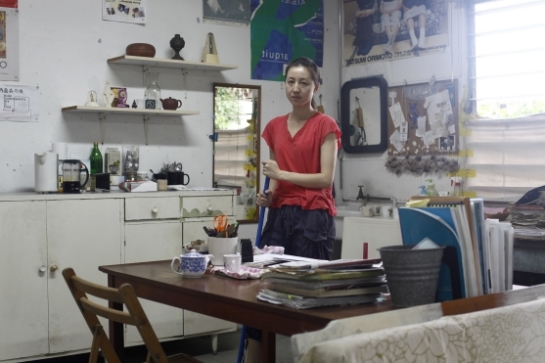
The softly-told ordinary story of the mainland Chinese Xiao Jing who moved to Singapore is part of the Motherland series of short films by artist Sherman Ong. The Malaysia-born Singaporean artist has always worked around different countries and different fields – photography, film, art – reaching excellence in each one of those. The social aspect is very much present in his work. We hear about the struggling of individuals to be accepted in the Singaporean society, which is not so welcoming as it claims to be. In his role as a director, Sherman Ong does’t hold a militant stare, but rather a compassionate one. The theme of migration has been very dear to the artist’s heart. Together with Motherland, he also tackled it in his movie ‘Flooding in time of drought’.
The film speculates on a situation where the water supply would run dry in Singapore, and is a fusion of documentary and fiction narrative. The protagonists are foreign migrants, and the water – or lack of it – became the leitmotiv to explore 8 interweaved stories told in 10 languages. The actors are all non-professionals. “In that film there was dialogue, but then the scene and the dialogue almost go in separate directions. So what you see on the screen is not what is said in the dialogue. Some in the audience said that watching this film is like reading a novel because her story is told, but you don’t see the story on the screen”, explained Sherman. “The story happens in the mind’s eye, somewhere in between the screen and the audience. Somewhere in that invisible space.”
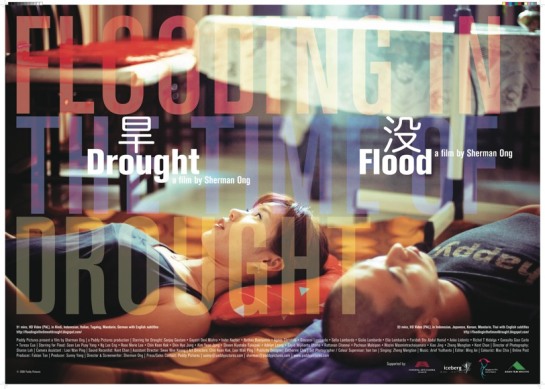
The situation of difficulty and discomfort the director imagined would cause racial tensions to surface and superstition and ethnical discrimination to arise, drawing similarities to what happened in the 1997 riots in Indonesia as well as in the World War II. However, another more noble sentiment would leak in: human solidarity in the face of common difficulty.
You are born in Malaysia, but you now live in Singapore…
I was born in Malaysia and did both college and university in Singapore. Along with an attachment to the country, I developed my practice in Singapore. So now if you ask me I’d say if Malaysia is my country, then Singapore is my city.
Do you feel in the Motherland series there is an autobiographical element as well?
Yes. There is a personal point of view. My maternal grandfather came from Malaysia to Singapore and he had one family in Malaysia and one family in Singapore. My mother was from the Malaysian family, so we always moved across countries, but Malaysia and Singapore used to be one country before. In my childhood I have witnessed a mix between political events that the individual is not able to control. How the political events affect the life of the individual. It is like the European union; one day the countries decide to join together and the individual person can’t say yes or no. You just adjust to the new situation.
My ancestors are part of the early Chinese who came to Singapore in the seventeen hundreds. We are there for almost nine generations. We don’t speak Chinese anymore, we speak a mix between Malay and English in the family. But then there is also the last Chinese who are fourth generation. That group still speak Chinese, the reason being that the first batch of Chinese people that came were not allowed to leave China. This first group of Chinese came as traders and then they married local women. So the children were brought up following the identity of the father, but then they speak the language of the mother. They are mixed, and this latter group is called the Strait Chinese or the Peranakan. Then the later Chinese came at a point where women could also leave China and now there is a new Chinese immigration system in Singapore. These different levels created resentment. The person who is there earlier always thinks the later one to try take their position or compete with.
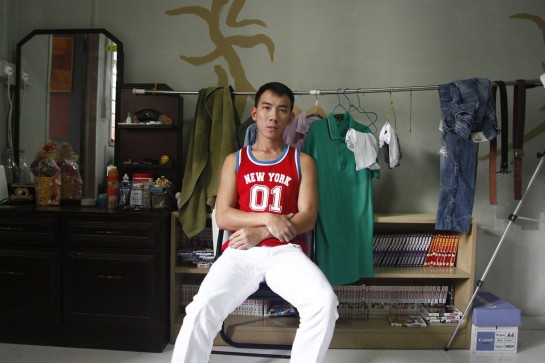
This dynamic is certainly at play also today in other parts of the world. Whoever is there earlier will always feel a bit of resentment towards the newcomers. How do you look at Singaporean contemporary art in the socio-political context of the region?
Singapore is so small and as a country is not like China or India where the country is not only economically big, but also politically influential. Singapore doesn’t have a political voice internationally. So the artist is in a difficult position. If you have Chinese artists that make something even vaguely political, they get a lot of attention because China is always in the media. Whereas Singapore doesn’t have a political cashier, so for the art scene is more difficult to get attention. How does the art stand to a larger landscape, on an international level. This also has an effect on practice artists. Singapore is a place where the region plays a big part, you can’t look at Singapore in isolation from the region. The position of Singapore has always been to service the region. It was always a port city that was constantly providing service in the region and this is why it developed the concept of the motherland. Of people coming. Some choose to make their home there, some of them just decide to go, but those deciding to make their home there still have this desire of eventually wanting to die in their own country.
Looking at your work, I’d say that you represent emblematically this hybridism and diversity of Singapore.
Yes, to me these themes are connected to the different way the SEA countries were administered. The Dutch, the British and the French administered their colonies in a different way from the Portuguese and the Spanish. Maybe there is more mixing, whereas the British tend to segregate and so do the French. So that’s why in the British colonies you have Chinatown and you have Little India – these were actually ghettos during the colonial era and now they are celebrated. They celebrate these ghettos. They become historicised, and history becomes celebration. But then you realise these were actually ghettos and created division. Because I wasn’t born in Singapore, I don’t want to create work that is specifically about Singapore. I always look at Singapore’s role in the larger perspective. Some other artists would focus more just on Singapore. For me to really understand Singapore, means having to look at the wider picture of the country.
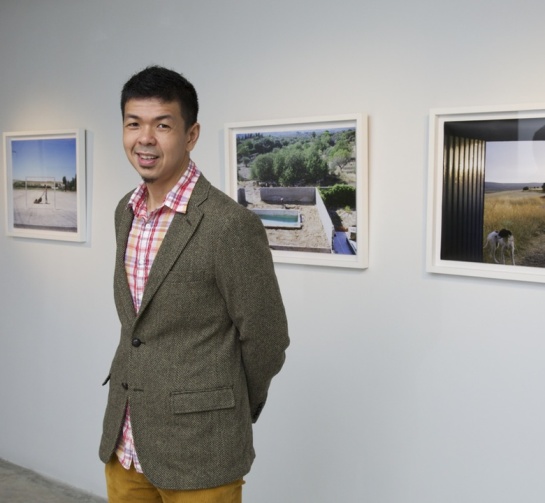
An interesting device in the Motherland series is that in the beginning it looks like a movie, but then the character turns and talk to the camera.
Yes, at one point you start to question the reality of what you are seeing. Maybe she’s too perfect to be just a documentary, you ask yourself whether what you are listening to is real. People are wondering if she’s an actress. She is not, and she’s actually playing stories of real people. She is a composite character. These are stories that are putting together five other stories or news reports. I put together these stories and I was also interviewing the protagonist about their own experience. Xiao Jing for example came from China and she has her own life and her own perspectives. At the same time I was reading about these new Chinese immigrants who are snatching husbands of the other Singaporean women, so it becomes a social context at the same time. There is a social and political angle to it, but I always want to situate it into the context of the individual. When we see the talking head, this is normally considered boring. I was working in television before, and my executive producer explained to me that after 5 seconds of talking head, you need to cut it to something else. It is boring and people would switch channel. So for this I wanted to do almost the opposite. You get mesmerised by what the person is doing. Then she looks into the camera and it’s something that you never ever do, not even in a documentary, so it’s almost a confession. It’s almost like a confession box with the viewer. The films are very much about the normal people and the struggles of ordinary people. The drama comes from the mundane.
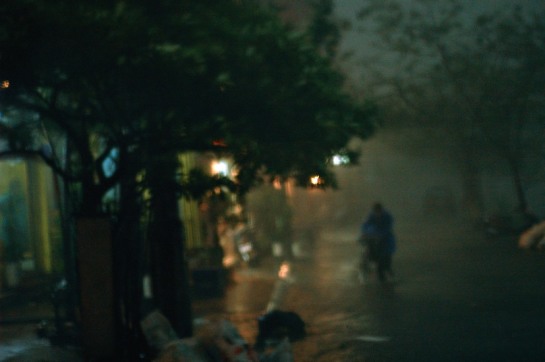
What makes good video art for you?
I find that visual art and moving image, especially film, is indirect. Good films are always indirect, they are never straightforward. A photograph in a magazine or in a newspaper has to be as clear and direct as possible. Their role is to convey their message in the shortest time possible. Whereas in the artistic expression, you have the possibility of making people think, but it doesn’t have to be so direct. It’s about poking them and make them think or revaluate the processes. Of course then the audience has to do some work also.
Of course, that’s the open work.
That is why some people say they don’t understand a work, they say, “It’s too difficult for me”. Sometimes the audience don’t make the effort to understand the context. It goes both ways – the work communicates in a certain direction and the receiver has to make the effort to meet it at a certain point.
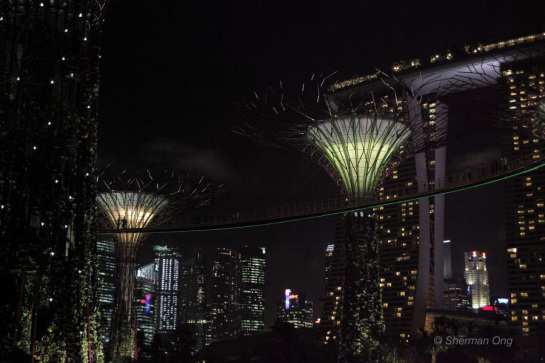
Speaking of trends or styles instead, in your view, is there something peculiar coming out from Singapore in terms of themes or style?
I think in Singapore you don’t have a clear trend, it’s quite open and most of the work has an international look. At the same time, something that is too international becomes a problem, because you are not able to situate the work and to say it’s coming from Singapore. It has a very derivative feel to it. It feels like it’s made by artists in Berlin or in London, for the simple reason that most of these artists are educated in Europe, the UK or Australia. They draw a lot from that area of knowledge. So the problem of Singapore is that we don’t have a strong base culture, like Indonesia, and we don’t have a filtering language that influences down and becomes your own. In Singapore, because we use English and most of the knowledge that we get is from English or western websites, there is no filtering or distillation process that makes the work peculiarly Singaporean. The work feels derivative, and this I personally feel is problematic. That is why when I make my work, I’m always very conscious of this issue that the work has to be able, when it’s put on an international stage, to have that smell – not from Singapore, but from the region. The region is so diverse, it’s so mixed. It is in the middle of the two big countries, China and India. In the middle you have Indochina; Thailand, Vietnam, Cambodia, Laos. It is always under the radar, the problems are not big enough to get global attention unless is something very big. At the same time we are not so important economically, but now something is slowly coming up. So that is why in this case Singapore is taking the leap in having a big art fair in Singapore and making events in Europe. Even if shows are on Southeast Asia, often times Singapore is taking a role of creating a certain cultural capital, positioning itself like this is the place to be.




